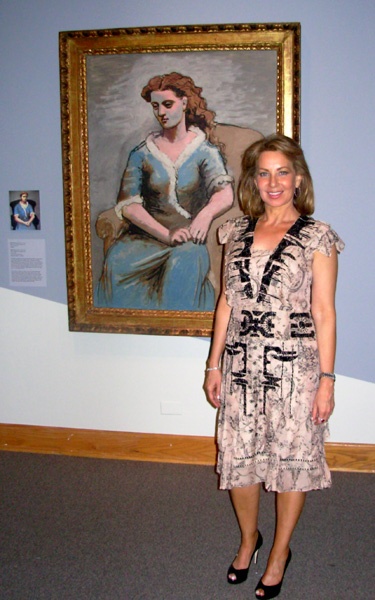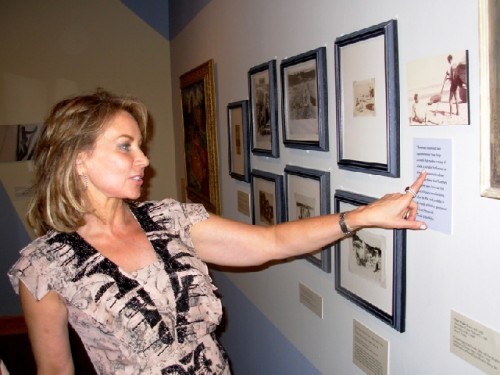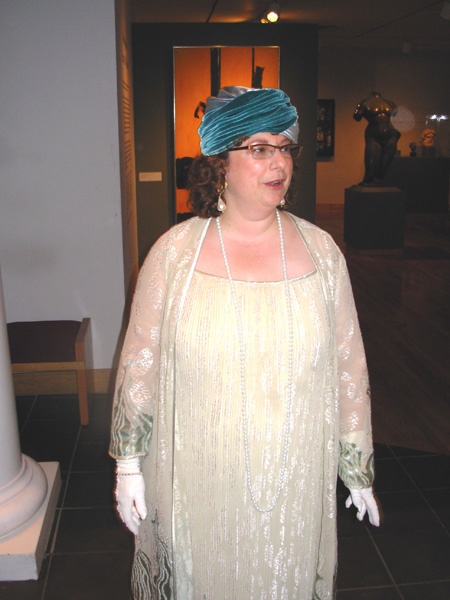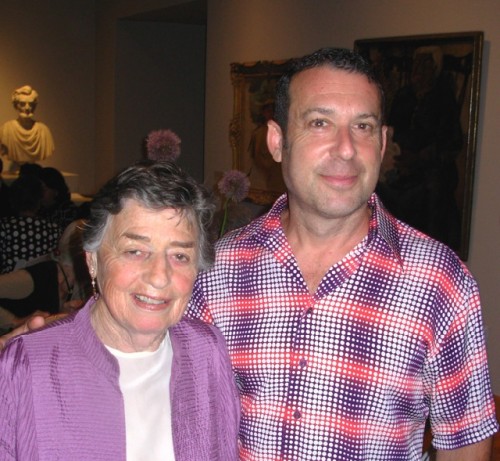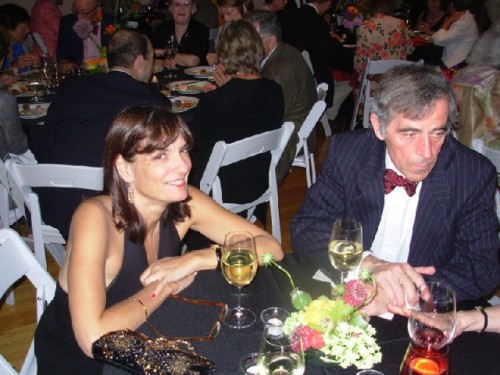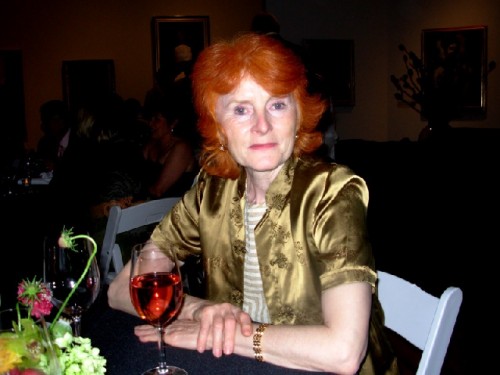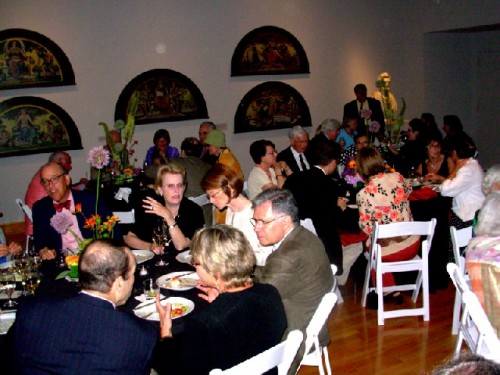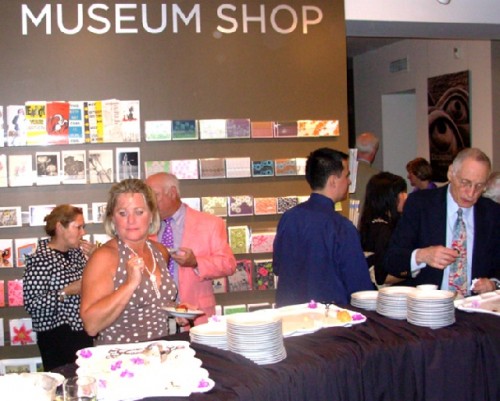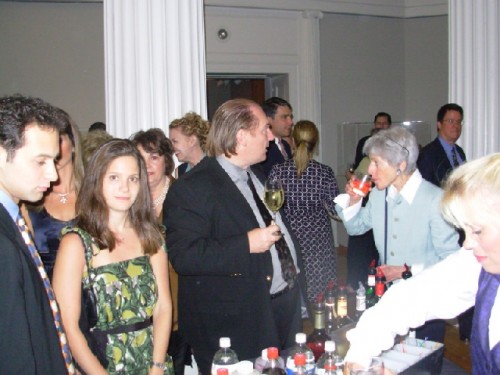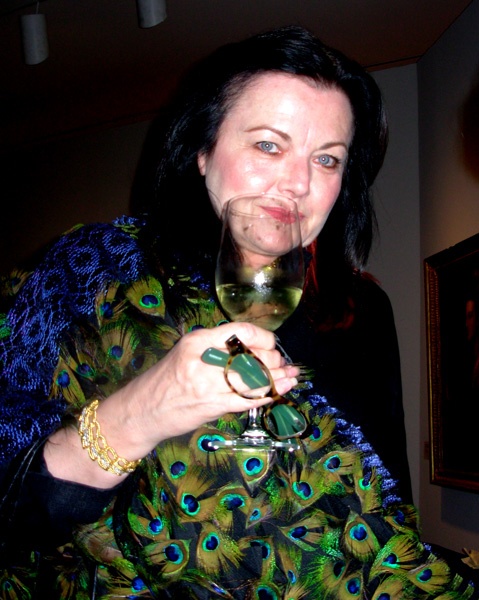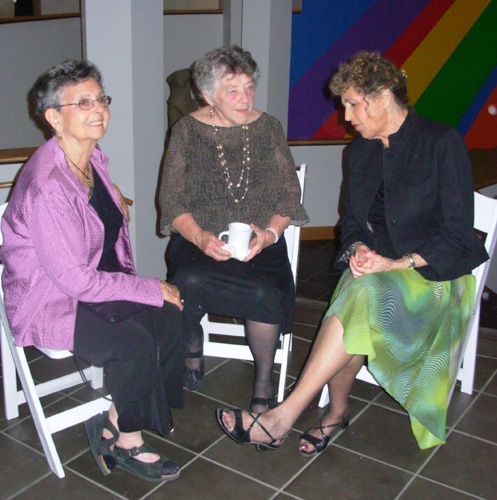Gerald Murphy Inspired Gala at Williams College Art Museum
Living Well Is the Best Revenge
By: Charles Giuliano - Jul 08, 2007
"This is one of the best nights of my life" said retiring Williams College Art Museum senior curator, Deborah Rothschild, as she took a moment to discuss some highlights of the exhibition of seven of fifteen paintings (all that survive) and the related documentation and memorabilia of the incredible Gerald Murphy and his wife Sara focusing on their many friends forming the nucleus of the Lost Generation of Paris in the 1920s. "Other than when my sons were born of course."
Some four years of intensive work and research led up to a dense exhibition of works of art of the period that surrounded and inspired the Murphys in Paris. Every work, scrap of correspondence, drawing, and photograph she discussed with us during a brief overview of highlights resonated with rich historical insight and detail. On one wall, for example, there was a cluster of photographs of Murphy nude on his yacht. An important theme and issue in the life and work of Gerald Murphy was his struggle to overcome bisexual impulses. So these nudes by Man Ray were particularly reflective of that aspect of the persona.
"I discovered these images during my last days in Paris searching through the Man Ray archive that includes 15,000 photographs many of which have never been shown or documented" she said. Just pointing out a few of the highlights she discussed several photographs which remarkably compare to sketches by Picasso, a great friend of the Murphy's when they spent the summer together at the beach. "Look, he made these drawings just days after the photographs were taken." Or looking at other images there is a quote from "Tender Is the Night" by their friend F. Scott Fitzgerald which literally seems to illustrate the pose of the photograph. There was such a compelling intimacy about their relationships and the creative work of their dazzling circle of artist and writer friends. The Murphys were the inspiration for Nicole and Dick Diver in Fitzgerald's masterpiece "Tender Is the Night." It caused tensions between them and the author although they continued to support Scott through years of depression, alcoholism and decline including the confinement of Zelda and her tragic death by fire while hospitalized. The Murphys helped Scott to pay for his daughter Scottie's tuition at Vassar.
They were good and generous to their friends, even though they faced near bankruptcy during the Depression when he came back to America to save the family business, but the payback often came with an odd twist. Scott famously quipped about them "The rich are different from us." Actually they weren't really rich but just better off and knew how to live with great flair and style. Another "friend" to whom they were enormously generous both personally and financially, was Ernest Hemingway who savaged them with a late and bitter book and skewed memoir of his early days in Paris "A Moveable Feast." It was written when Hemingway was a bitter old drunk tossed out of ever saloon in Key West. What a bastard. But brilliant as were all the dazzling stars in the orbit of the Murphys who were the heart and soul, the very epicenter of the Lost Generation.
"Where is the Woman in White" I asked about the Museum of Modern Art's portrait which was identified by William Rubin as a painting of Sara Murphy with whom the MoMA curator alleges the artist was having an affair at the time. Picasso, another fabulously gifted artist and all around shit as a human being, was known for taking great pleasure in seducing the wives of his friends. The American expatriate was considered to be one of the great beauties of her generation. Truly a national treasure. And there was a bi thing with Gerald. So Rubin concluded that Sara may well have been a Picasso conquest. There is evidence of a later falling out with the Cubist master and a strange incident in a restaurant many years later when he apparently snubbed her. But Rothschild doubts the tryst and describes the Murphys as "a great love story."
"We couldn't get the Woman in White" Rothschild said "But we got the fabulous Detroit painting." She led us to it and compared it to a reproduction of a similar costume and pose of the artist's wife Olga. Both works were executed in his Classical style. She discussed how neither painting is a true likeness of the two women. That Picasso was inspired by but did not reproduce them. But they much reflect the differences in their characters from the more formal view of Olga and the sensuality of Sara. "That was his genius," she said. Nearby was a reproduction of a sketch for the Woman in White which significantly included the signature strand of pearls which Sara stylishly wore even to the beach. It is a further link to Rubin's identity of Sara as the Woman in White. In the painting the artist eliminated the pearls which may have been too literal a reference or perhaps interfered with his notions of classicizing his Apollonian creations. Like the Greek originals of the 5th Century BC it was considered vulgar to depict a likeness. Portraits, such as the Hellenistic images of Alexander the Great, represented paradigms based on the gods.
We thanked Deborah for taking that time with us during such a busy evening and hope to catch up with her another time for further discussion of the exhibition and her plans following retirement from the museum in the fall.
Indeed it was a gala opening last night. The Murphys were famous for their inventive parties and one thinks they would have thoroughly enjoyed this benefit for the exhibition fund. The museum was mobbed to say the least with tables, buffets and bars set up in several galleries. Most of the guests seemed primarily involved with the Moveable Feast, so to speak, a spread of roast beef, rack of lamb, salmon, salads, open bar, and later desserts and coffee set up in the gift shop. There was lots of table hopping among what appeared to be an older Williams crowd. Perhaps the evening was too pricey for the younger set but there were attractively attired ushers and interns adding flair and sanguine energy to the occasion.
As usual there was a great range of fashion statements. A lot of Berkshire people seem to dress down to a fault. It often seems that the greater one's social and economic status the more casual the attire. New York gallerist, Jack Shainman, who grew up in Williamstown, introduced us to his mother. The museum director, Lisa Corrin, greeted arrivals in a vintage flapper outfit. A gentleman cleverly accessorized with a colorful scarf on his head emulating a widely circulated PR shot of Gerald Murphy so attired.
Overall it was a fabulous evening of fine food, strong drink and stunning company. Indeed Living Well Is the Best Revenge. And where better to Put on the Ritz than bucolic, upscale Williamstown? My goodness.

